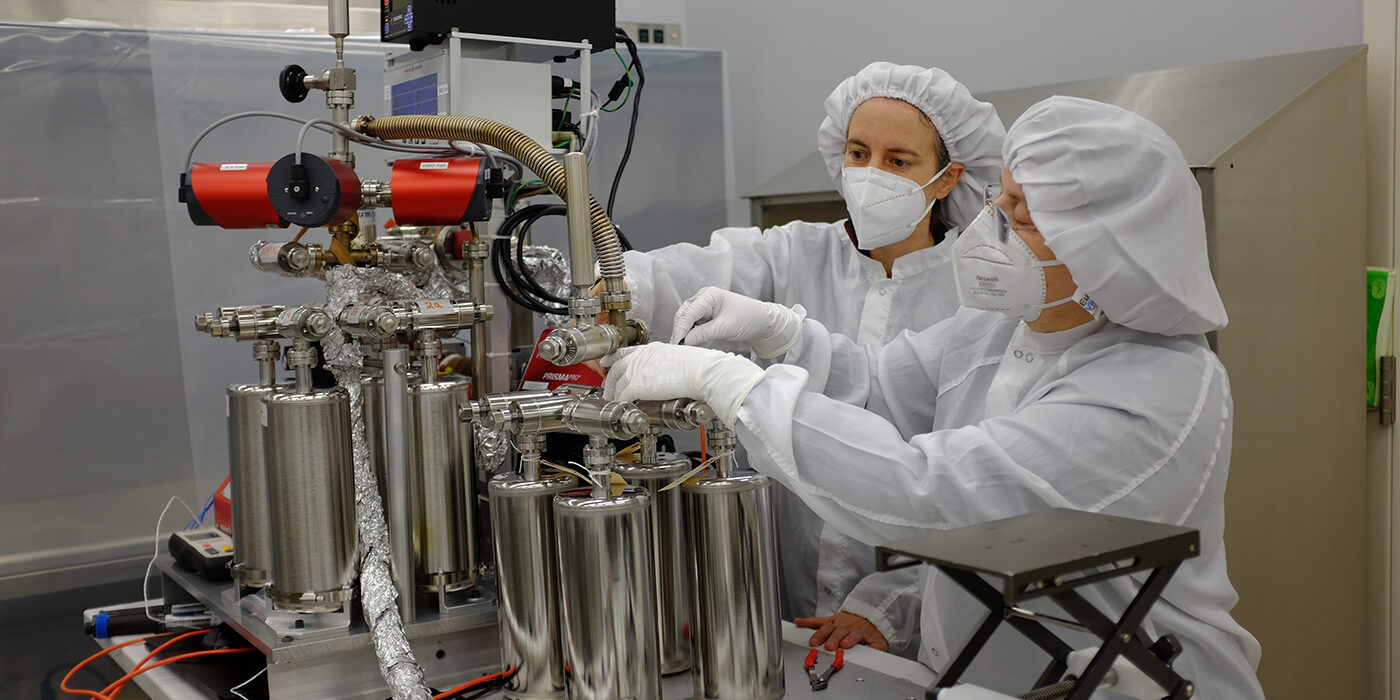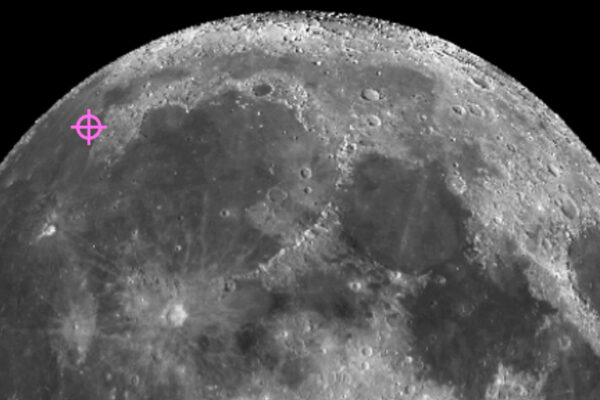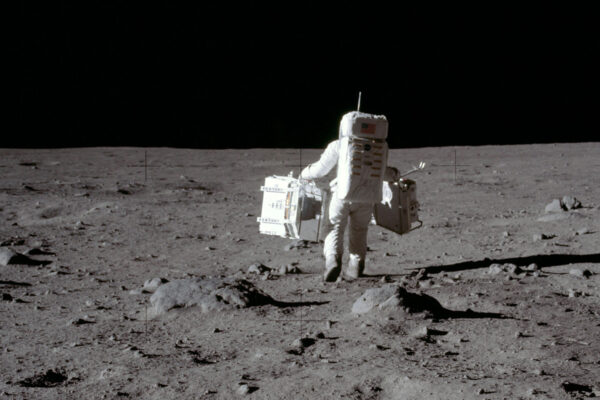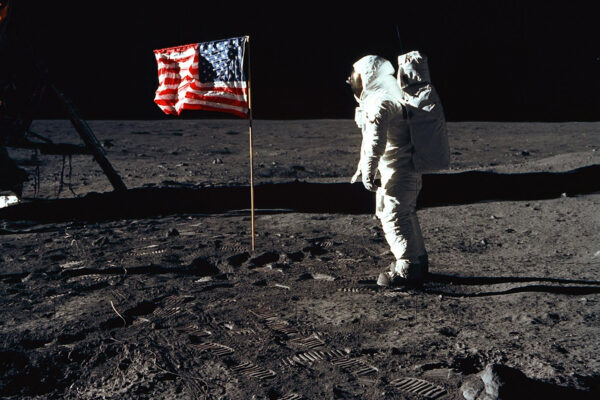Scientists from Washington University in St. Louis are helping to recover gases from a container of lunar soil that astronauts collected and sealed under vacuum on the surface of the Moon in 1972. The effort is part of NASA’s Apollo Next Generation Sample Analysis (ANGSA) initiative.
Apollo 17 astronauts Harrison Schmitt and Eugene Cernan collected the sample from the site of an ancient landslide in the Moon’s Taurus-Littrow Valley. The astronauts used a coring device to dig out a column of lunar regolith — a rough mixture of dust, soil and broken rock from the surface of the Moon — and sealed it in a container. Back on Earth, NASA carefully placed the container in the lunar vault at NASA’s Johnson Space Center, where it has remained in pristine condition, virtually untouched until now.
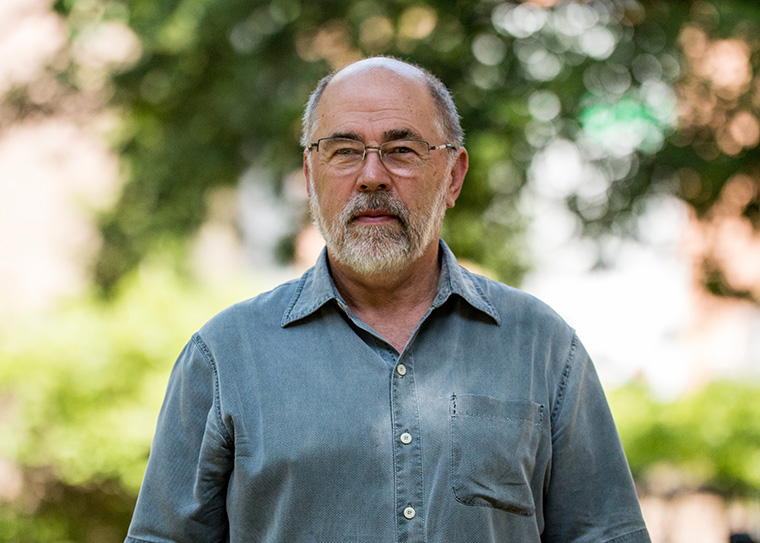
“For the last 50 years, the lunar core was enclosed in a core sample vacuum container, which was then enclosed in an outer vacuum container,” said Alex Meshik, a research professor of physics in Arts & Sciences and faculty fellow of the university’s McDonnell Center for the Space Sciences. “They were nested together, almost like Russian dolls.”
The containers were placed in two sealed Teflon bags and stored in a nitrogen glove box in a vault.
Cracking the containers open, as Meshik and collaborators did last month, was tricky. The scientists needed to be able to identify the original chemical signature of every bit of gas that could be in the containers. That includes lunar gas that might have been captured at the time the lunar regolith was collected on the surface of the Moon, as well as any other gases that could have seeped from the rocks during the subsequent decades in storage.
“There is no perfect vacuum seal,” Meshik said. “There was no way to know how the vacuum seals on the containers fared after 50 years. Did they hold the vacuum? To what extent did they leak? The main challenge in building the extraction system was to anticipate every possible scenario so we would be ready for every outcome.
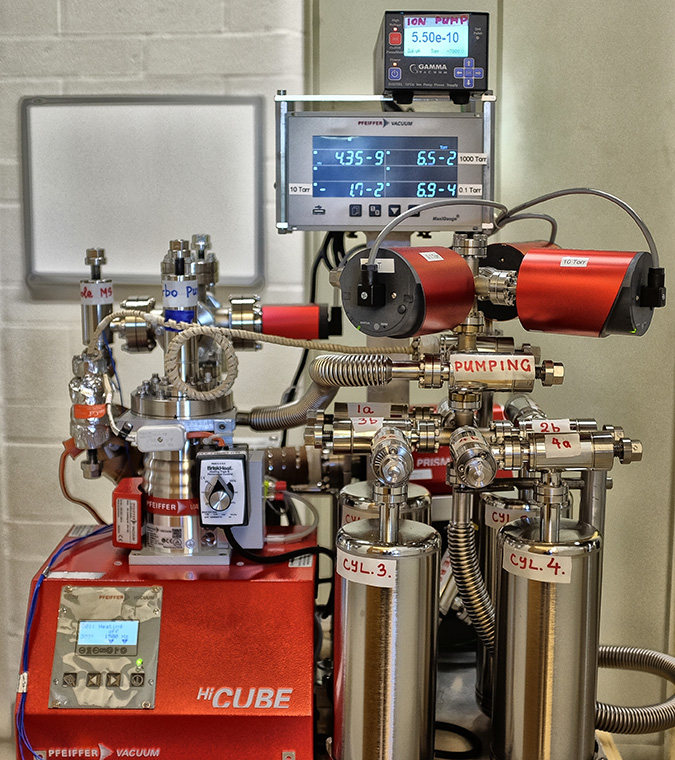
“Because of that, our apparatus was designed to be able to perform not just one single gas extraction but several extractions of different volumes at different conditions,” he said.
“To help us make the informed decisions during these extractions, we incorporated into the apparatus a mass spectrometer for real-time compositional analyses of the gas, and three high-precision capacitance manometers for nondestructive and gas-independent pressure measurements,” Meshik said.
Meshik led the design and construction of the extraction manifold apparatus, with support from Olga Pravdivtseva, a research associate professor of physics, and Rita Parai, an assistant professor of earth and planetary sciences, also faculty fellows of the McDonnell Center for the Space Sciences, all in Arts & Sciences at Washington University. The three scientists are internationally recognized for their high-precision noble gas analyses of terrestrial and extraterrestrial materials from various bodies in the solar system, including the sun itself (Genesis mission) and cosmic dust (Stardust mission).
Ryan Zeigler, NASA’s Apollo sample curator and a Washington University alumnus, received and also helped test the apparatus at Johnson Space Center.
“Fifty years ago, when these samples were collected, NASA scientists had the foresight to put in place curation procedures that would ensure future generations access to pristine samples when new analytical methods and procedures would be available, and new scientific questions would be asked,” said Brad Jolliff, the Scott Rudolph Professor of Earth and Planetary Sciences and director of the McDonnell Center for the Space Sciences.
“At Washington University, we have several cutting-edge labs looking at various aspects of these precious samples and testing hypotheses about their origins and how they fit into a modern context of planetary science,” said Jolliff, who is the institutional lead investigator for Washington University on its ANGSA team, which is led by the University of New Mexico.
“The noble gas studies are a great example because they contain not only much information about present-day implantation of material from the sun into the surface of the Moon, but also about the very origin of the Moon four and a half billion years ago. Stay tuned for interesting results to come!”
The noble gas studies are a great example because they contain not only much information about present-day implantation of material from the sun into the surface of the Moon, but also about the very origin of the Moon four and a half billion years ago. Stay tuned for interesting results to come!
Brad Jolliff
Preliminary science results from the initial gas collection will be discussed during the Lunar and Planetary Science Conference, which will be held in Houston March 7-11.
The lunar gases from the storage containers are now being collected using the extraction manifold apparatus. After the gases trapped in the containers are collected, the team plans to let other gases slowly diffuse out of the Moon rocks themselves. NASA will then send the gases to selected laboratories in the U.S. and Europe specializing in high-precision analyses of oxygen, nitrogen, noble gases and organics — including to Washington University.
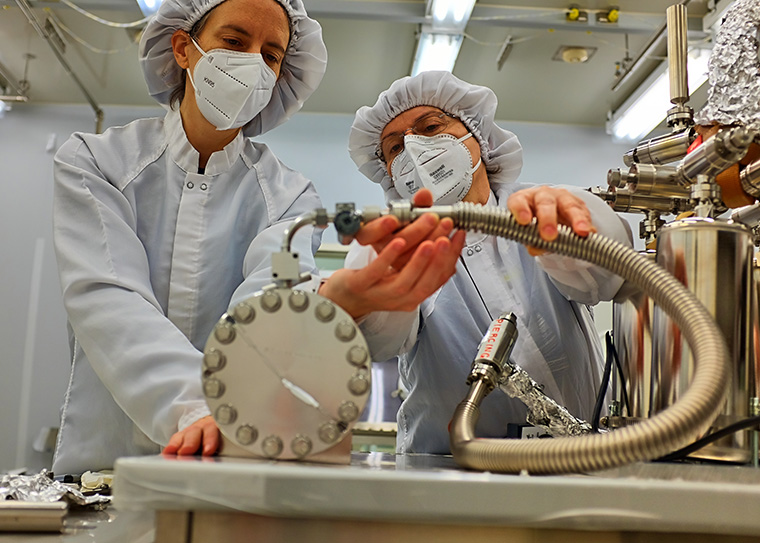
“One of the important characteristics of 73001 (NASA’s identifier for the particular Apollo 17 lunar regolith sample) is that it was taken at a depth that was always below freezing for water,” Jolliff noted. “So the thought was that it might preserve more volatiles than the upper part, which was subjected to more of the effects of diurnal heating and cooling.”
As an experimental physicist, Meshik has a background in high-vacuum equipment and isotope mass spectrometry that dates back to his university years in Russia, then at Max-Planck-Institut für Kernphysik in Heidelberg, Germany, and finally at Washington University.
He shared a personal reflection on the many hours of meticulous labor spent assembling the extraction device with his wife and frequent collaborator Pravdivtseva:
“The construction of the apparatus occurred at the peak of COVID restrictions, when we had to keep six feet distance between team members and work most of the time from home,” Meshik said. “We were limited to only momentary outdoor contacts with our EPS colleagues. Meanwhile, the construction required more than two hands. Luckily the restrictions did not apply to married couples. This is how the apparatus became our family business.”
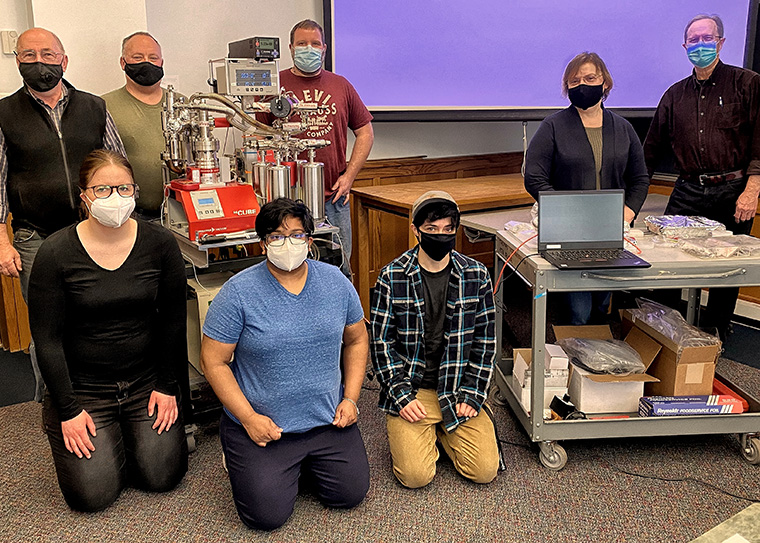
Read more on the Department of Physics website.
The Washington University participation in the ANGSA program is through the Consortium for the Advanced Analysis of Apollo Samples, led by principal investigator Charles (Chip) Shearer, University of New Mexico.
